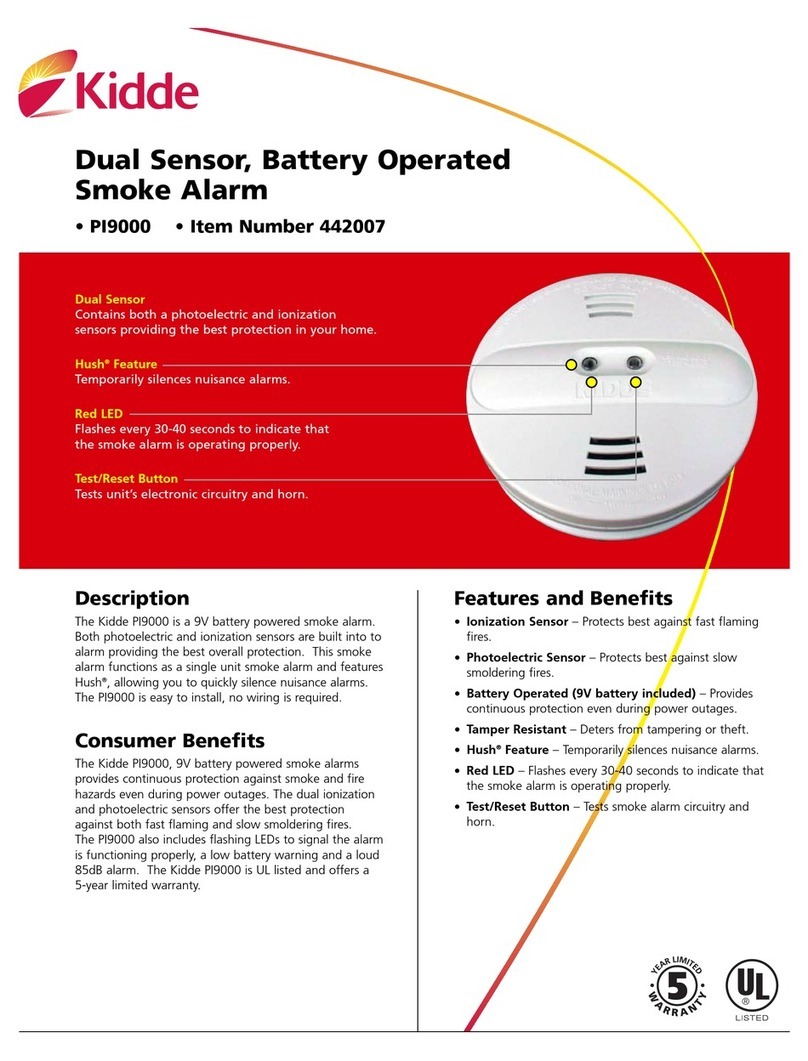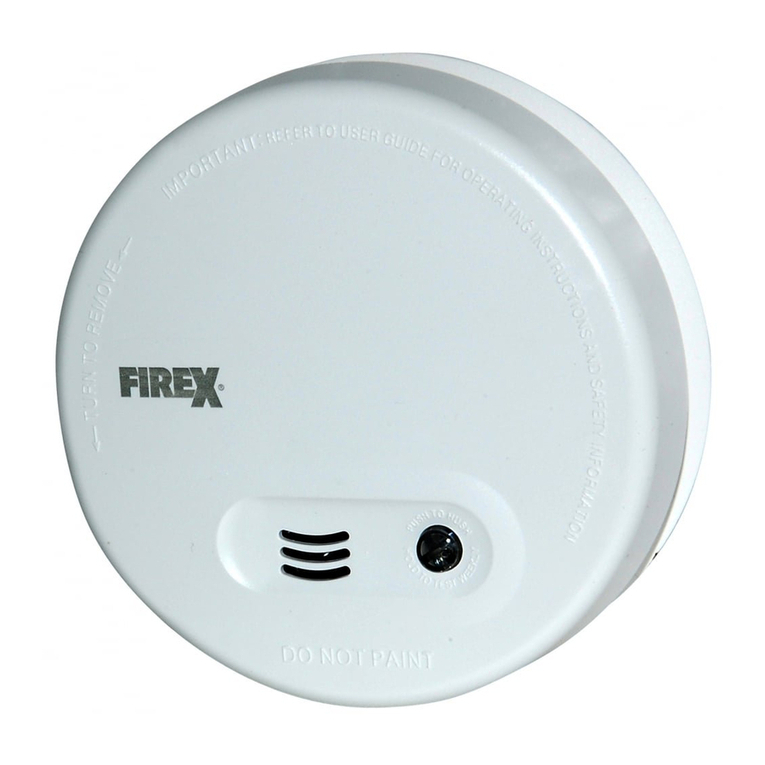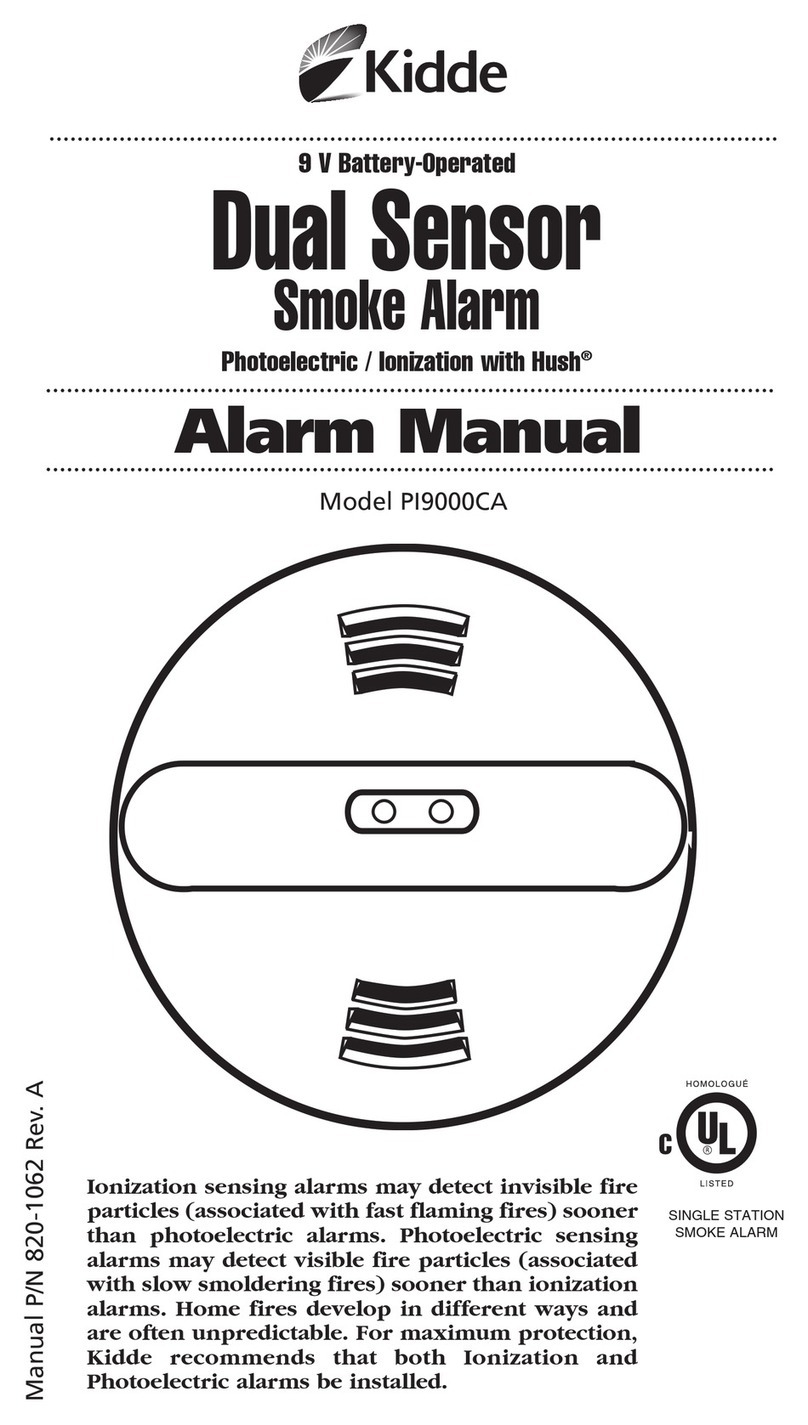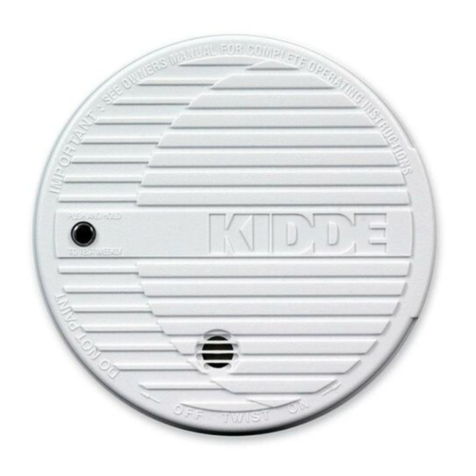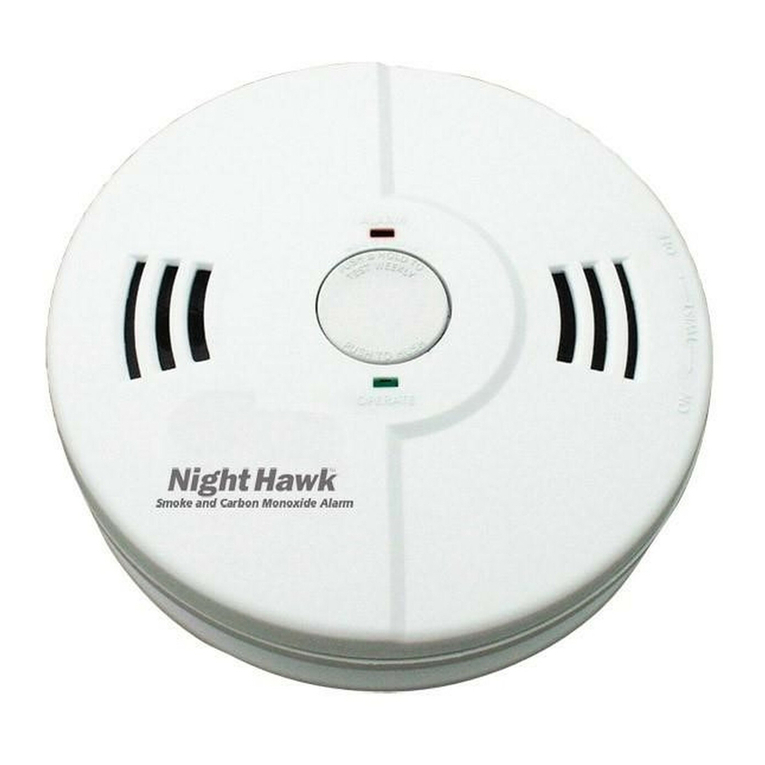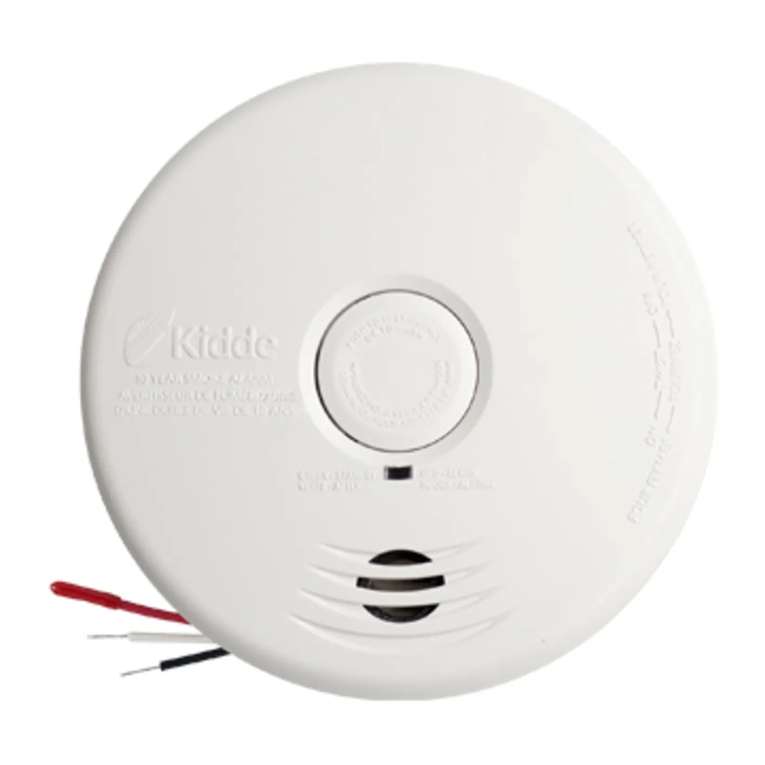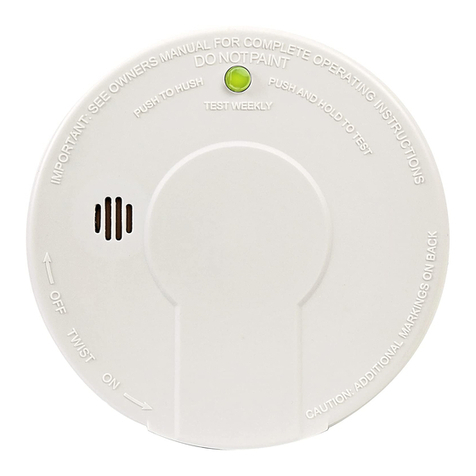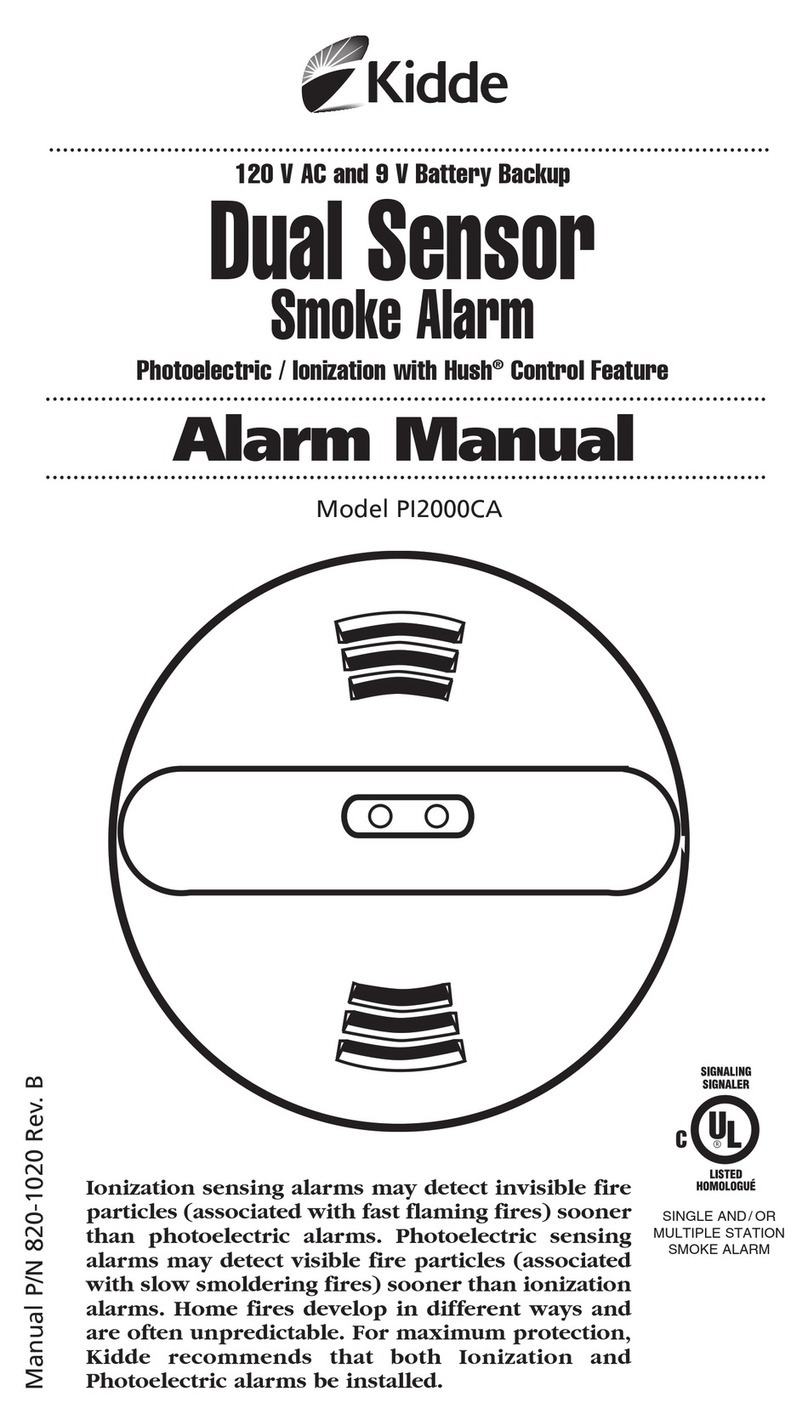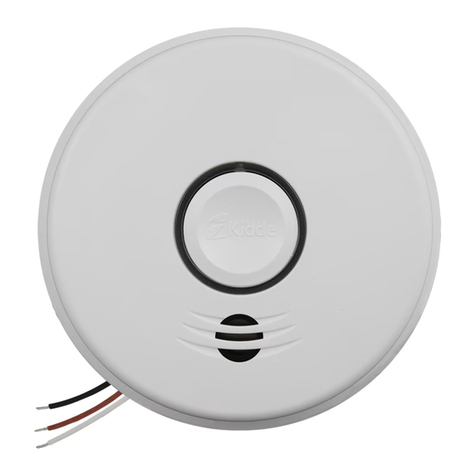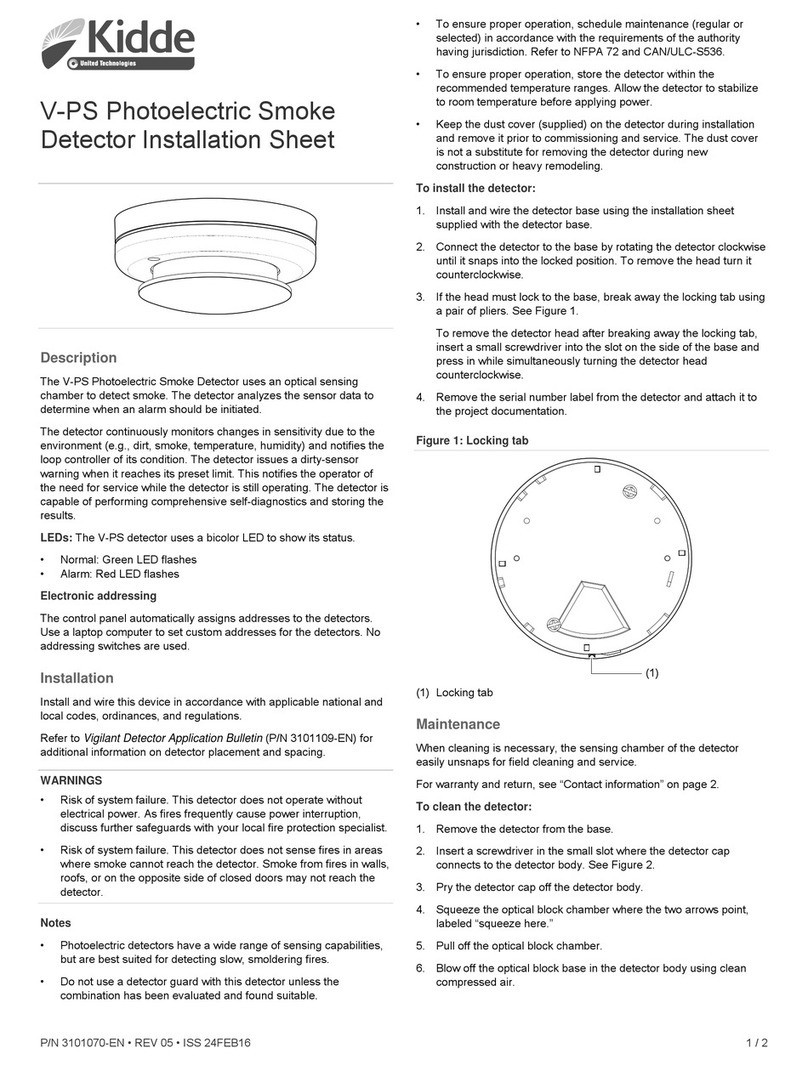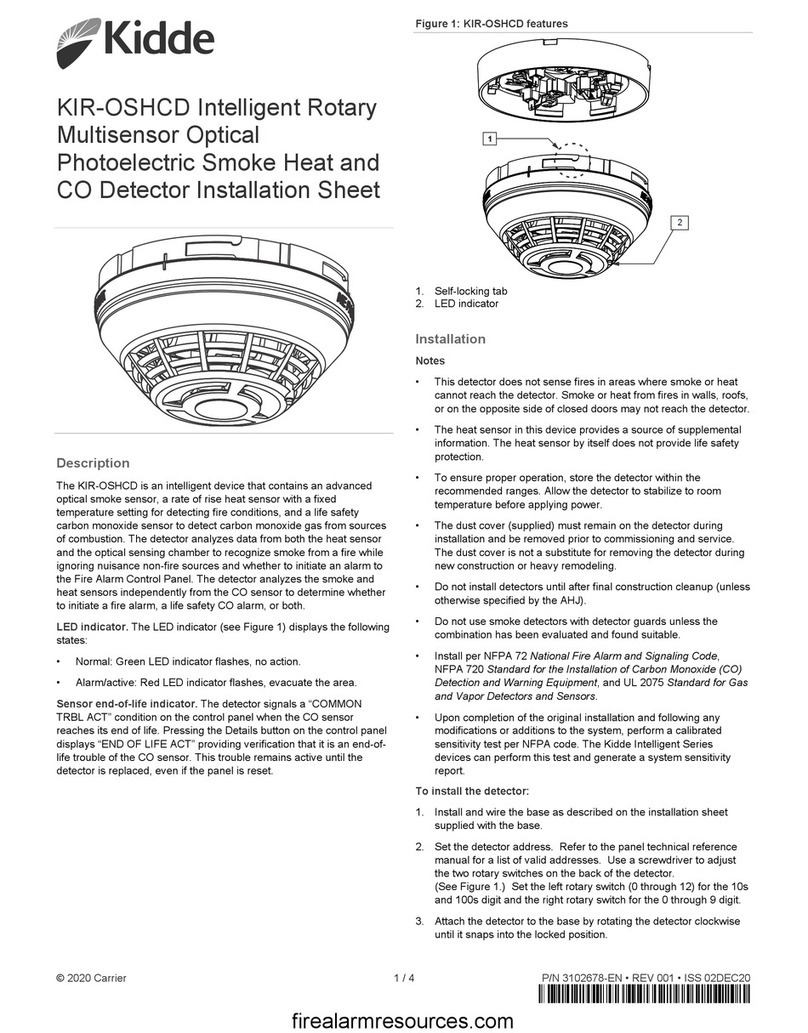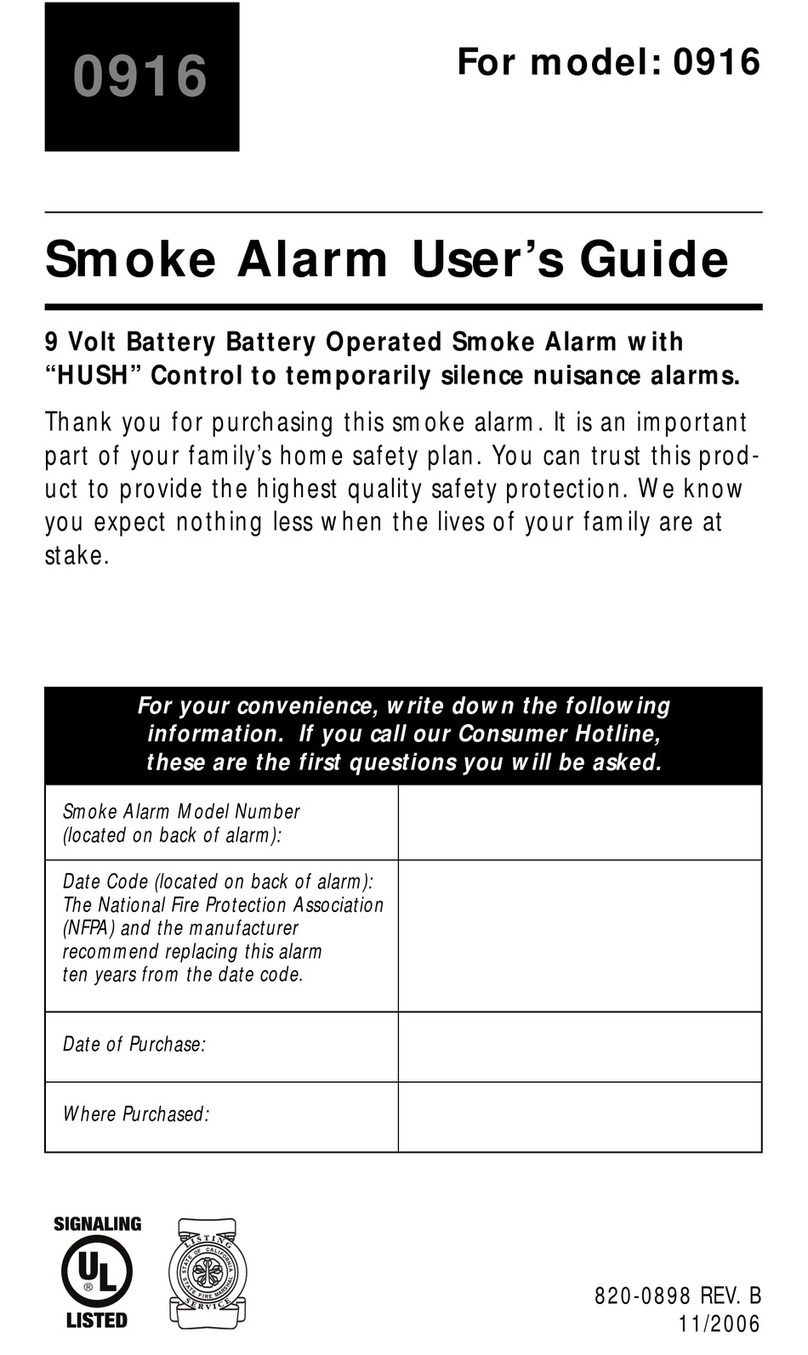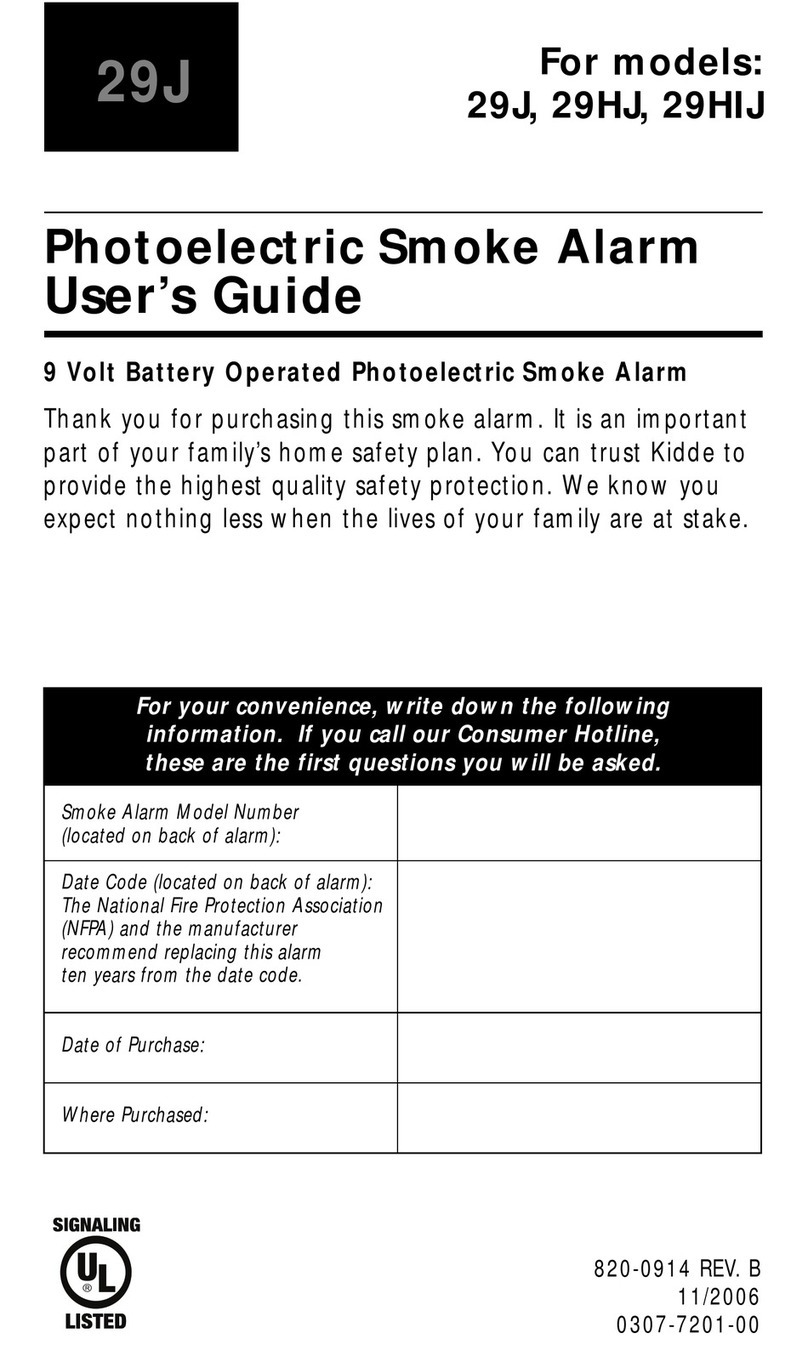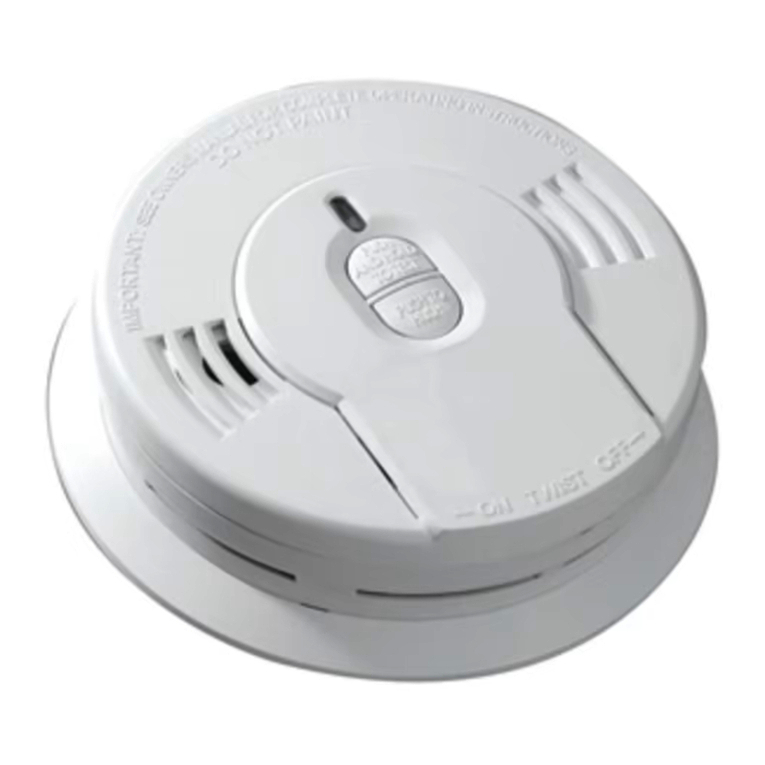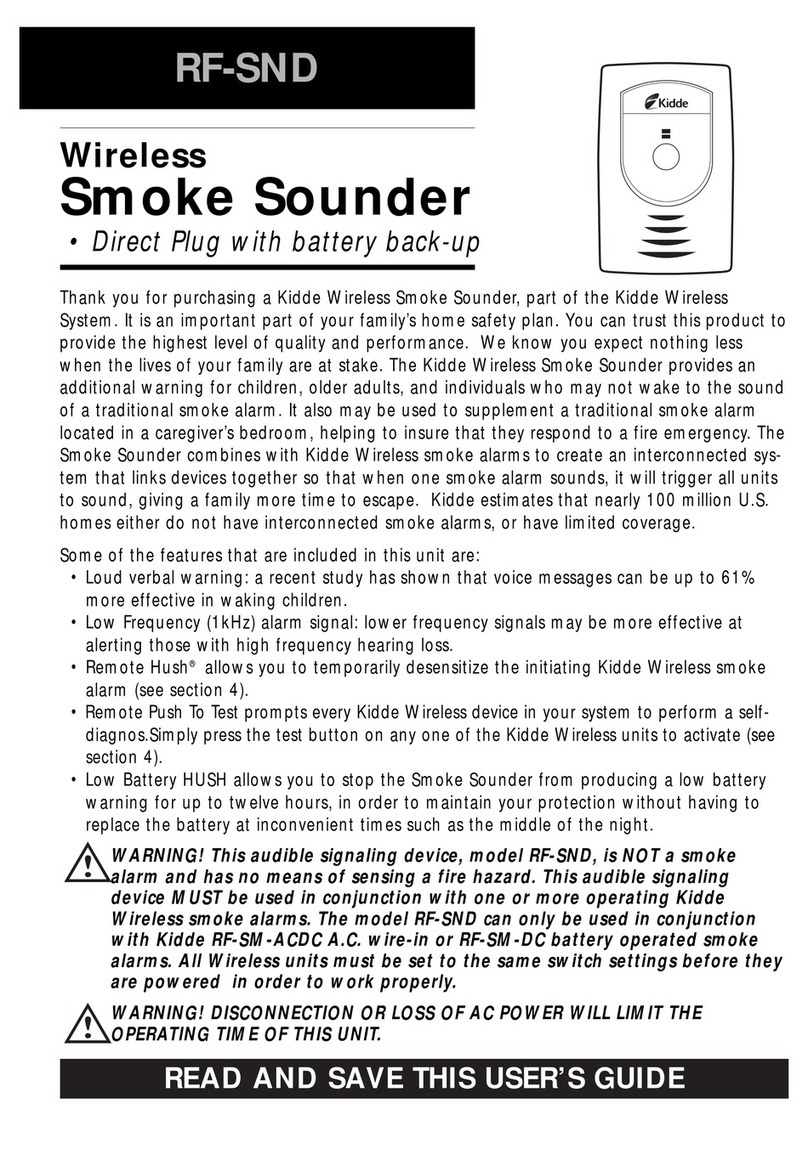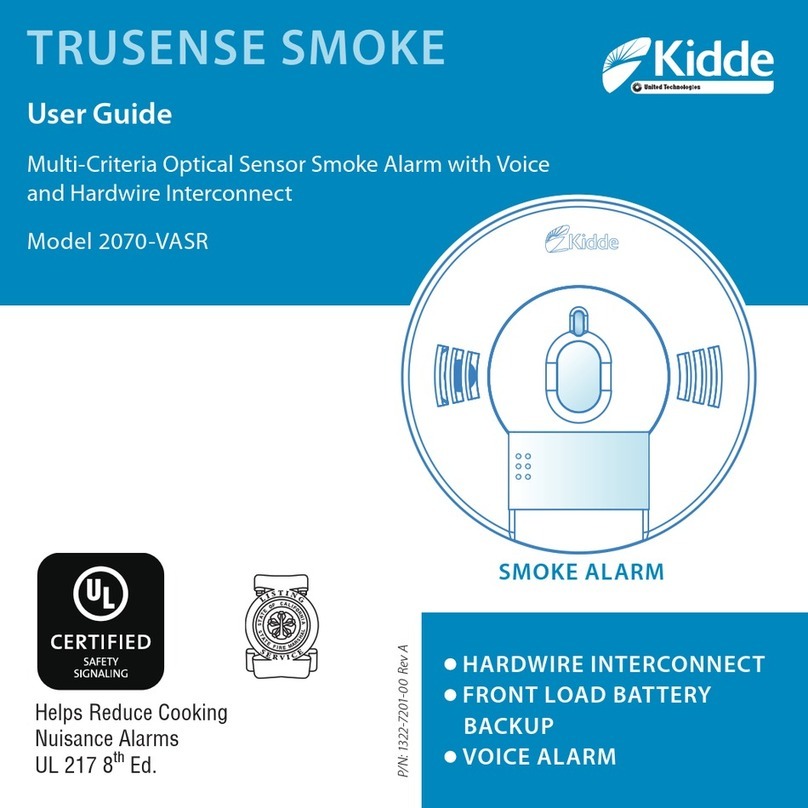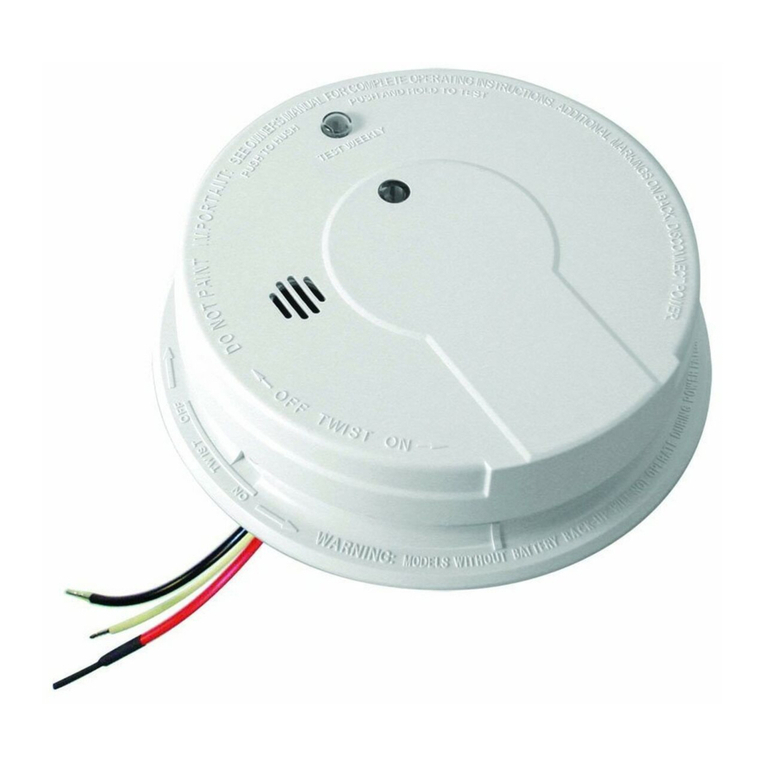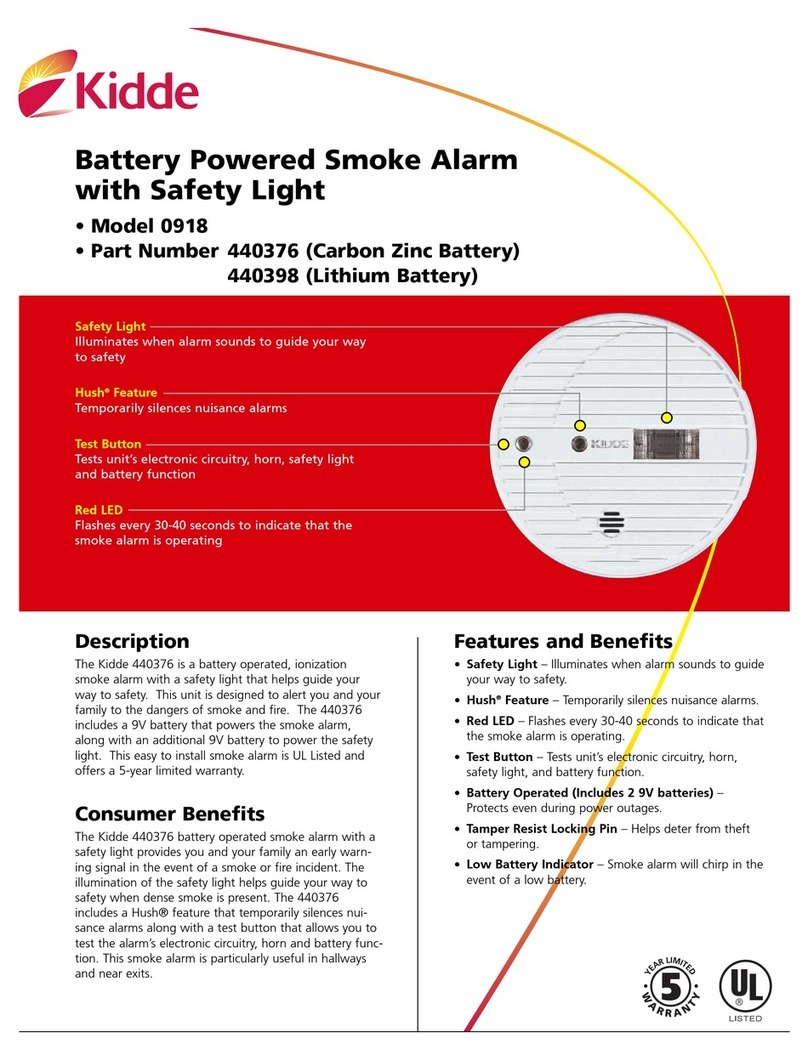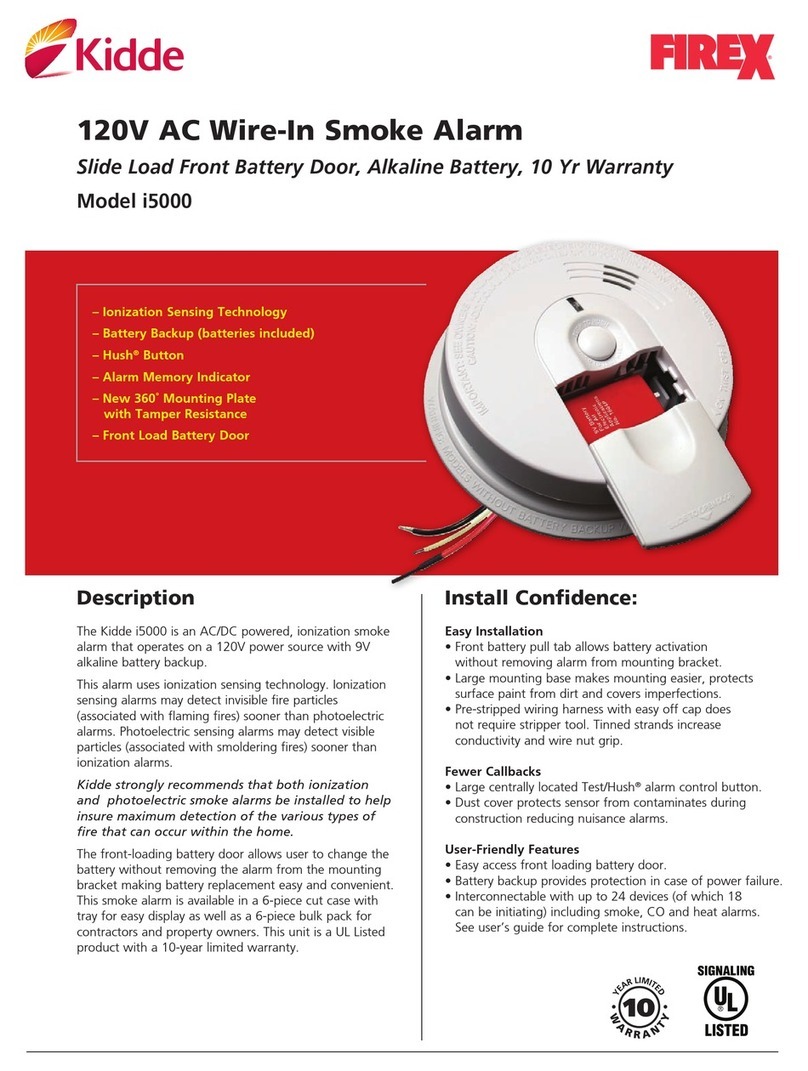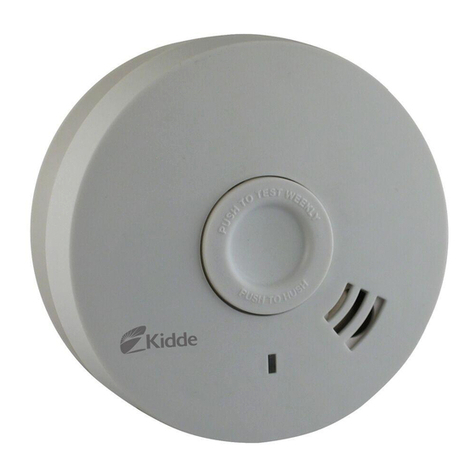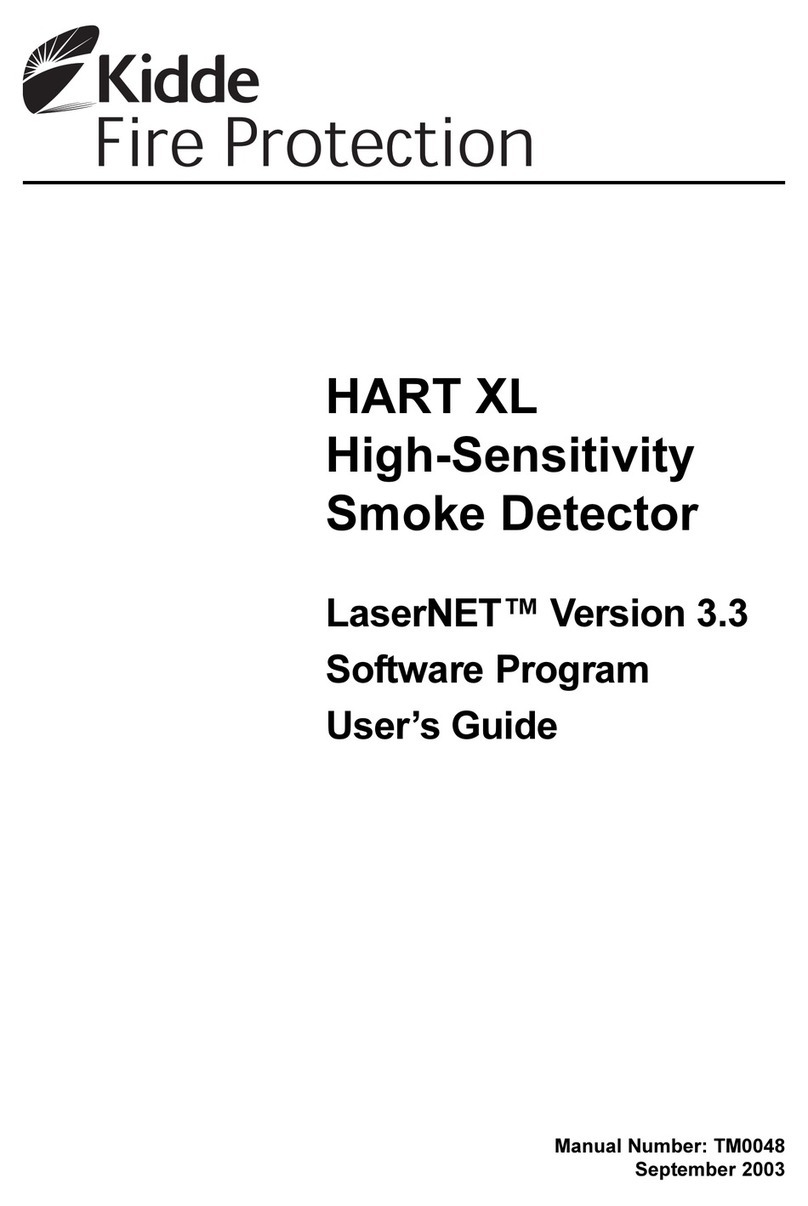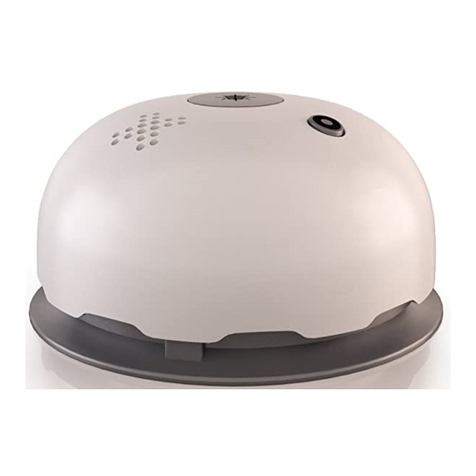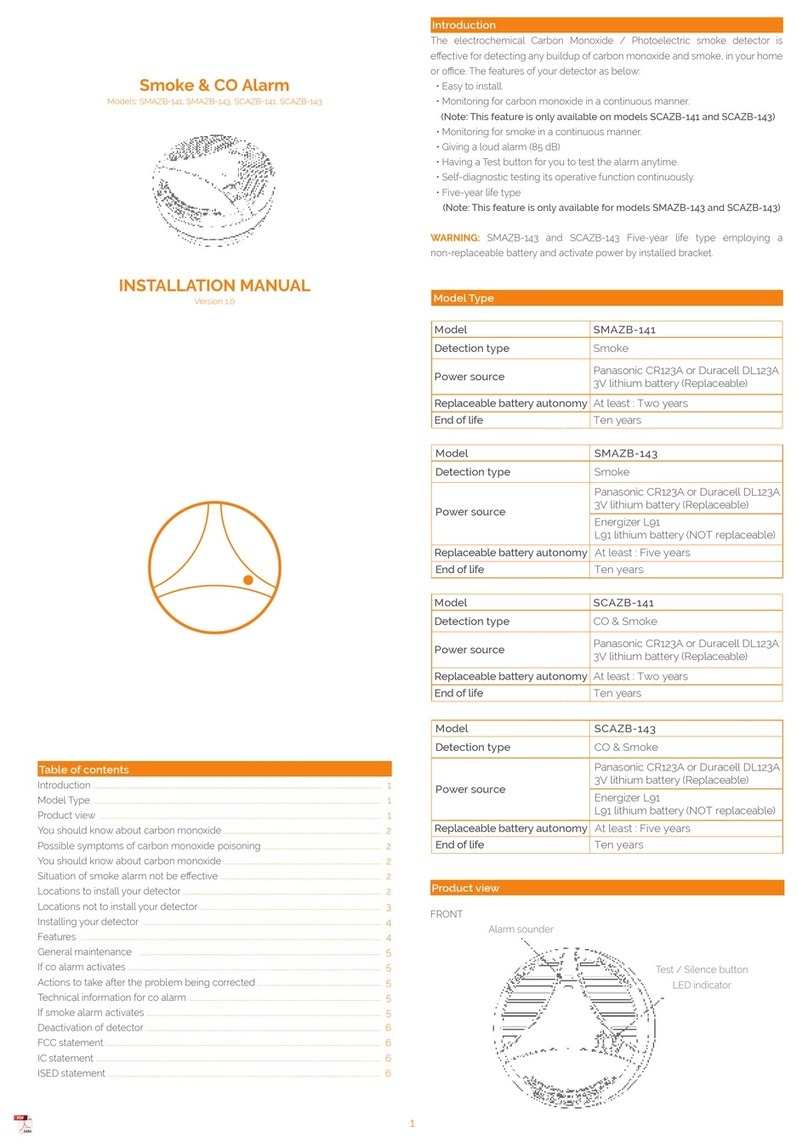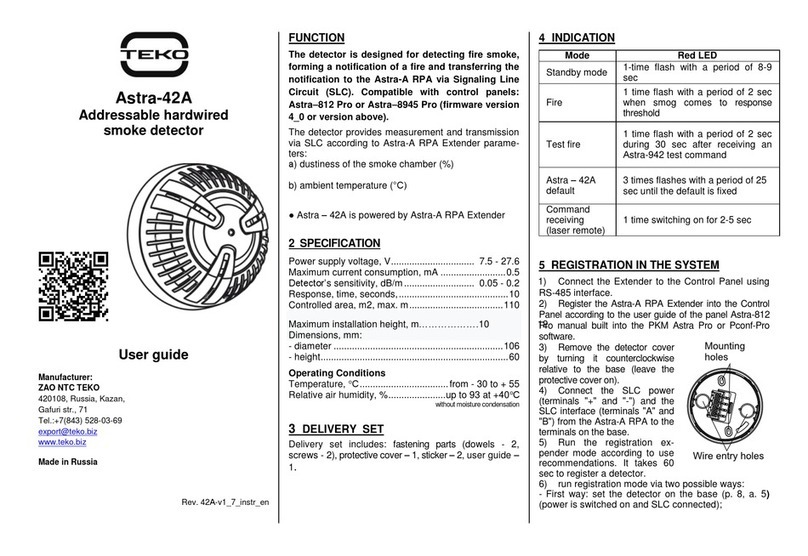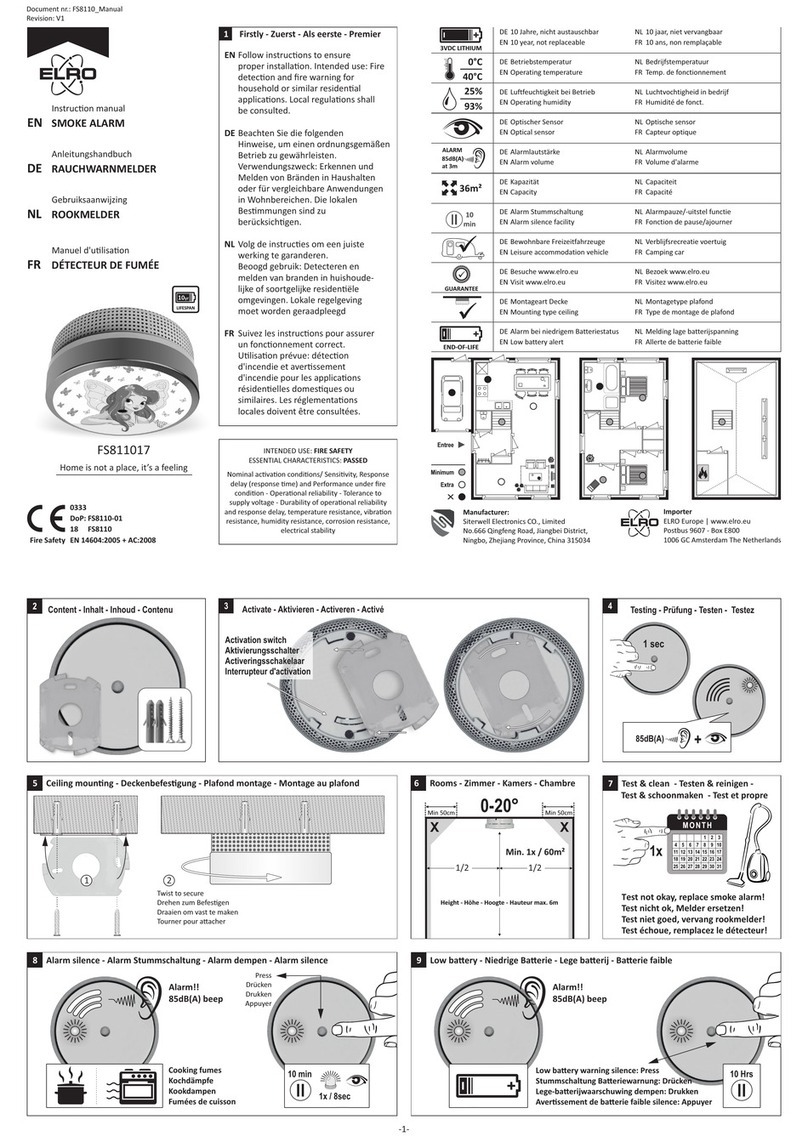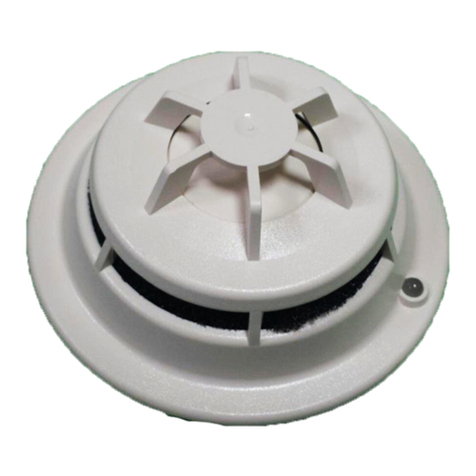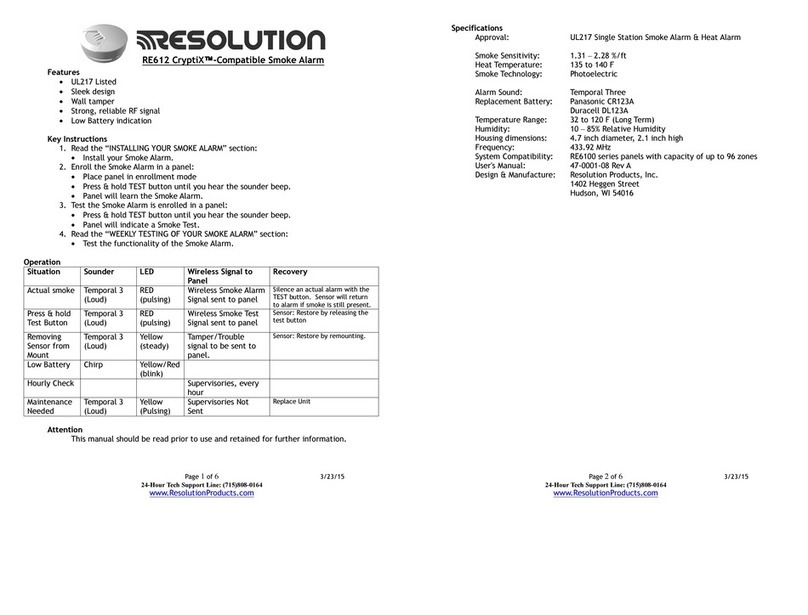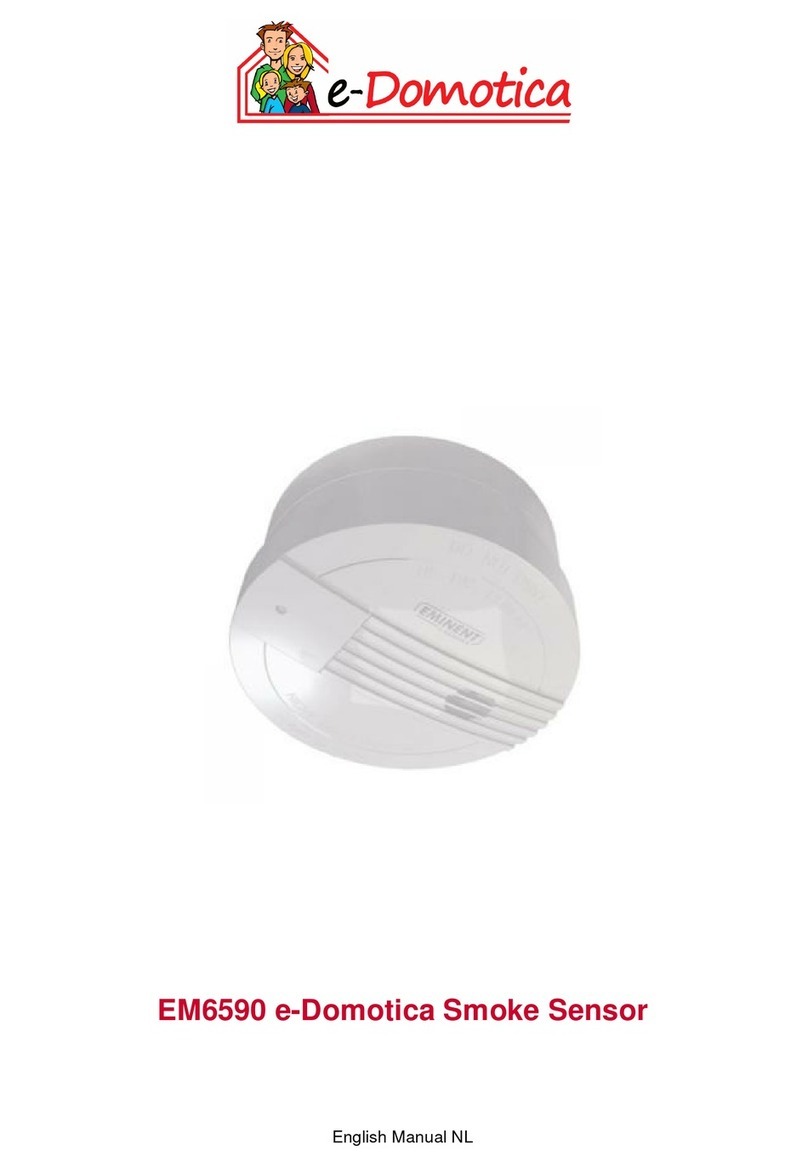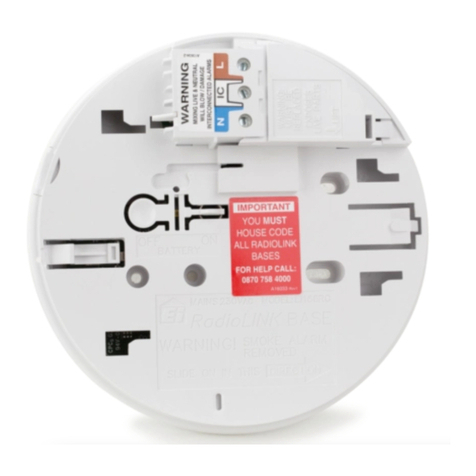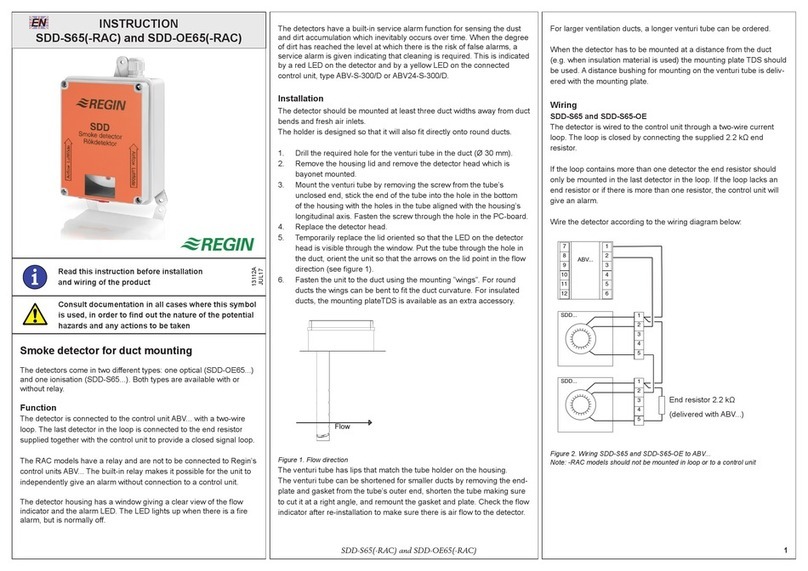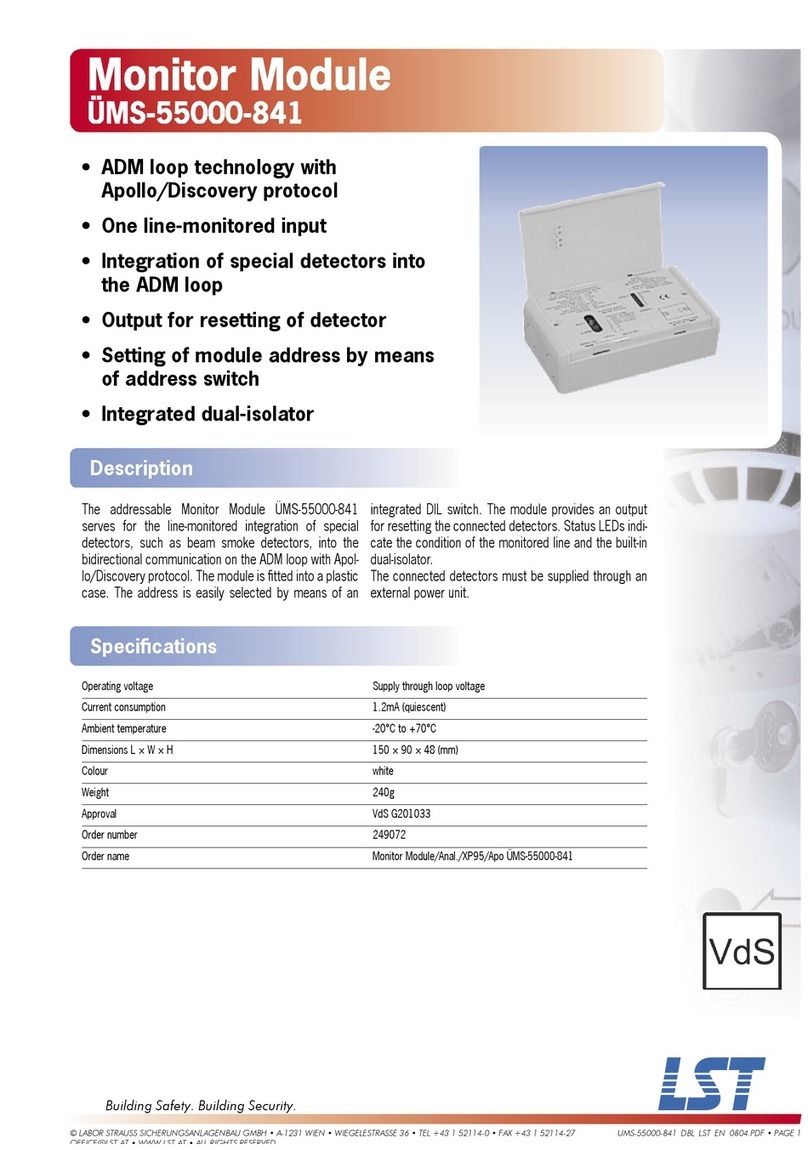
7
4. Troubleshooting Guide
If you are experiencing a problem with your alarm, or a fault, and are unsure of the next action, please contact product
support at 1-877-542-5471 before discharging the battery. You may also write us at: Kidde, 1016 Corporate Park Drive,
Mebane, NC 27302, or visit our internet address at www.kidde.com.
Trouble Condition Visual Indications Audible Indications Action:
False Low Battery
(AC power connected
before backup battery
activated) Amber
LED
blinks
every
5
seconds
Chirp every 60 sec with voice
"Activate Battery."
* Rotate unit fully onto mounting bracket to activate
battery.
Low Battery Chirp every 60 sec, voice every
30 sec: “Replace alarm.”
Voice stops after 5 mins.
* Remove, discharge, dispose unit, and replace as soon as
possible.
Fault Mode Chirp every 30 sec.
Voice every 30 sec: “Error, see
trouble shooting guide”
After 5 mins: no voice message
* See Cleaning Your Alarm section.
*
Push button once to attempt to reset the unit.
* Red LED will blink out an error code (number of blinks)
when button is pushed. Report the number of blinks to
customer service if needed.
* If error persists, or if customer service directs, remove,
discharge, dispose unit, and replace as soon as possible.
End of Unit Life Amber LED blinks twice
every 5 seconds.
Double chirp every 30 sec. First
5 mins: Voice every 30 sec:
“Replace alarm, press button to
temporarily silence.” Voice stops
after 5 mins. Voice “Temporarily
Silenced” after button push (first
7 days only). After 7 days, chirps
continue, with voice “Replace
Alarm” every 30 sec for 5 mins.
*
Push button once to silence for 24 hrs. (Push button again
to clear HushTM and perform a test.)
Note: 7 days after End of Unit Life begins, the notifications
cannot be silenced.
* Remove, discharge, dispose unit, and replace as soon as
possible.
Network Error Amber LED blinks every
5 seconds.
Chime every 30 secs. Voice every
30 sec: “Connection lost, press
button to temporarily silence.”
After 5 min: no voice messages.
Voice “Temporarily Silenced”
after button push.
* Push button to temporarily silence for 24 hrs. (Push
button again to clear
HushTM
and perform a test.)
* Call customer service.
* If error continues, remove, discharge, dispose unit, and
replace as soon as possible.
Loss of Wi-Fi
Connection (NOTE:
Wi-Fi features do not
function without AC
power.)
None None. *
The unit will attempt to re-connect on its own. After 10
consecutive mins of lost connection, you will receive a
notification of “Contact Lost” in your mobile App.
* Contact customer service. If error persists, or if customer
service directs, remove, discharge, dispose unit, and
replace as soon as possible.
Stuck Button None Chirp every 4 sec. * Push button to dislodge it from being stuck. If button
cannot be unstuck, remove alarm, discharge, dispose
unit, and replace as soon as possible.
NOTE: Indoor Air Quality (IAQ) notifications are sent only to your mobile device. The alarm does not give indications for IAQ.
Please refer to Support section in Kidde App or Help.Kidde.com.
